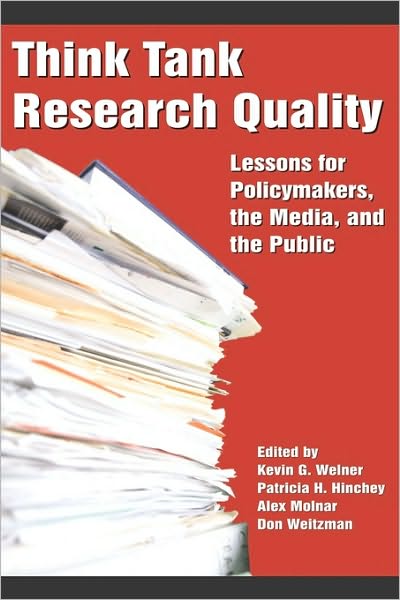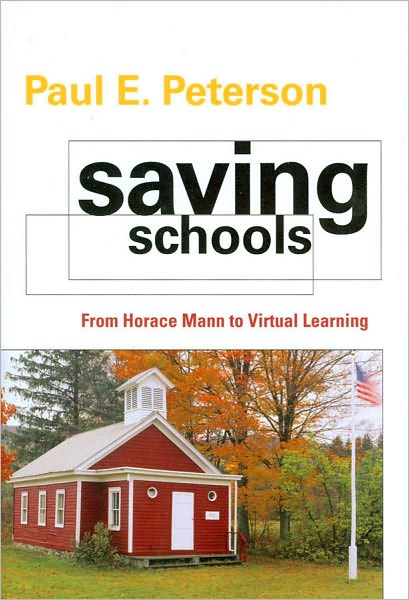How many times recently have you read an article in the newspaper that quoted research from the Thomas B. Fordham Foundation or have heard a TV news reporter quote research policy brief from the Friedman Foundation? Chances are, you have heard this more than once. These two think tanks work extremely hard to get their versions of research into the hands of the media at every turn. There are countless other organizations out there who disseminate information in the just the same manner and for the same purposes. As a 21st century administrator in the public schools, we must educate ourselves on the nature of research and learn as much as we can about think tanks and their political agendas. As a 21st century principal, I’m an advocate for public education, and I do not think those who would turn education into a market-based system have the best interest of children at heart.
According to a new book entitled Think Tank Research Quality: Lessons for Policymakers, the Media, and the Public, “there are many free-market think tanks that are part of a network of organizations promoting a relatively constrained set of educational policies.” These organizations and think tanks have a narrow agenda that includes promoting school vouchers, charter schools and any other measures that help them achieve education privatization. These organizations are even behind the strong anti-teacher union rhetoric seen so often in the media in recent months. Let’s face it, historically, the strongest and most formidable foe in their efforts to privatize education are the National Education Association and the American Federation of Teachers. Should these professional educator organizations be marginalized, they stand to gain much of their free-market education agenda. These think tanks and organizations are relentless in their efforts to promote vouchers and other market-based education measures. Their research is often suspect or even weak. They see absolutely nothing wrong with bending the interpretation of facts to fit their narrow agenda. They provide the media with this tainted research which is presented as the absolute truth.
Who are some of these think tanks? Some of the most prolific are the following:
- Brookings Institution
- American Enterprise Institute
- Hoover Institution
- Heritage Foundation
- Cato Institute
- Rand Corporation
- Consortium for Policy Research in Education
- Thomas B. Fordham Foundation
- Economic Policy Institute
- Friedman Foundation for Educational Choice
- There are quite a few others
These think tanks are some of the primary players behind efforts to promote school vouchers and charter schools. Their research is always slanted to support their political agenda, and they are some of the most often quoted in the media. not necessarily because their research is of such high quality, but because they make it so readily available. The 21st century administrator and educator would do well to view any research coming from these organizations with a healthy level of skepticism and scrutiny.
According to Think Tank Research Quality, these organizations have become so prolific due to large monetary gifts from a relatively small group of donors who have the same narrow political agenda. For example, three of the most common donors to these market-based think tanks are: 1) Lynde and Harry Bradley Foundation, 2) Sarah Scaife Foundation, and 3) John M. Olin Foundation. Just a quick examination of the web sites for these foundations quickly tells the tale. These donors fund mostly conservative market-based education foundations and do not hide that fact at all.
Let’s face it, none of these organizations are friends of our American Public Education System and any efforts on their part to make it seem so are part of their deceit. As a 21st century advocate of public schools, it is vital that we educate ourselves in what solid, valid research looks like so we can see through pseudo-research that is pushed as a part of a political agenda. It is also important that we look closely at these organizations themselves. Sometimes what looks like an innocuous sounding education organization has a darker motive when it comes to public schools. Finally, we only need to follow the money trail. These ultra-rich foundations do not hide the fact that they would promote private or charter schools at the expense of public schools. Our American Public School System is under attack like never before. As a 21st century principal who believes in the promise of public education, I cannot sit idly by while others use tainted research to push their narrow political agenda.





